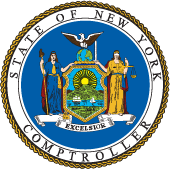Local Sales Tax Collection Growth Slows to 3 Percent in 2014; Slowest Growth Since 2009
Local sales tax growth was slower in 2014 than in any year since the 2008-2009 recession, in part due to slow growth in the first quarter of the year. Long Island collections declined, some upstate counties had strong growth due to increased sales tax rates, and New York City's growth was relatively strong. | [read county-by-county data - pdf]
